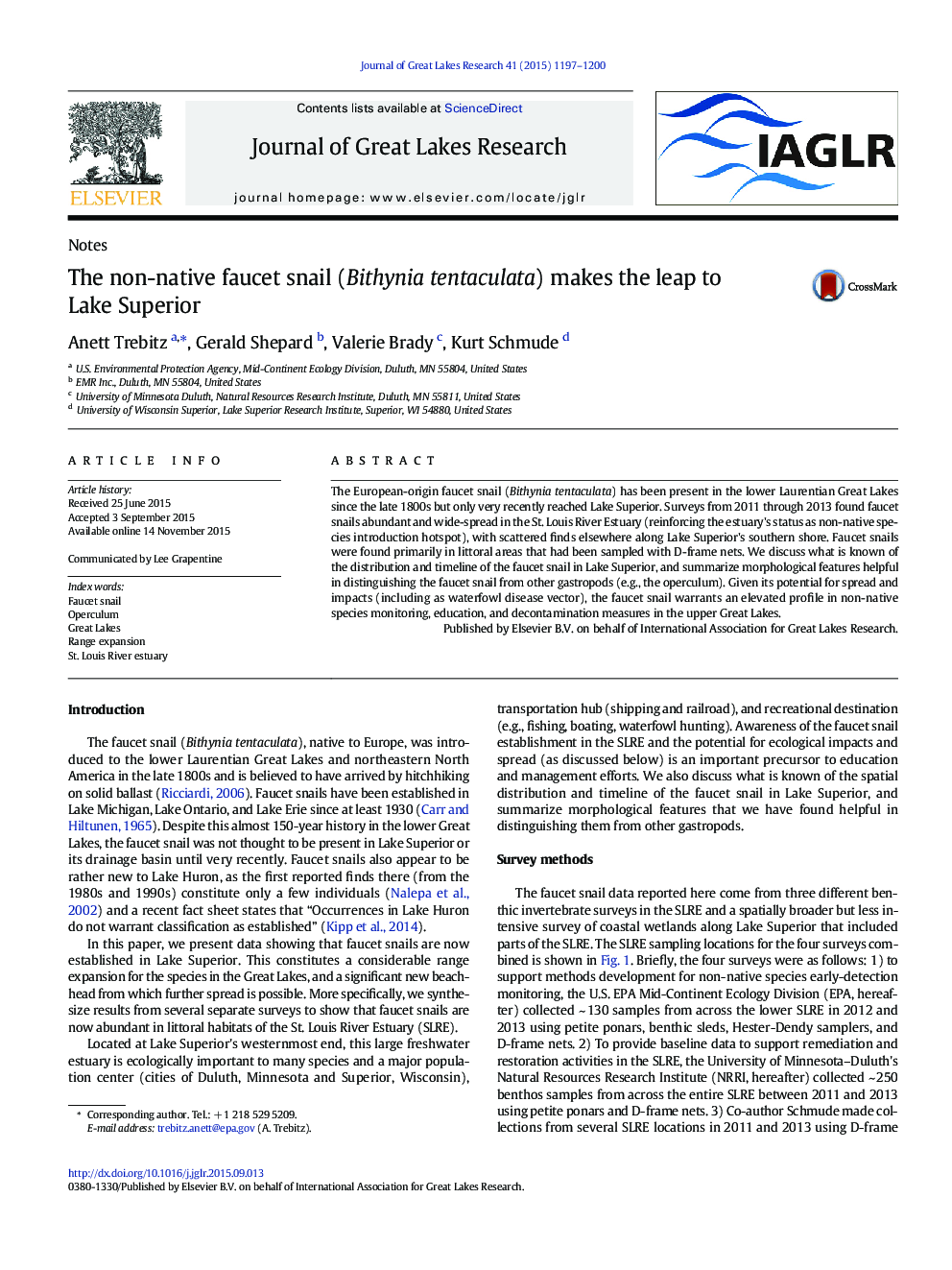| Article ID | Journal | Published Year | Pages | File Type |
|---|---|---|---|---|
| 6304890 | Journal of Great Lakes Research | 2015 | 4 Pages |
Abstract
The European-origin faucet snail (Bithynia tentaculata) has been present in the lower Laurentian Great Lakes since the late 1800s but only very recently reached Lake Superior. Surveys from 2011 through 2013 found faucet snails abundant and wide-spread in the St. Louis River Estuary (reinforcing the estuary's status as non-native species introduction hotspot), with scattered finds elsewhere along Lake Superior's southern shore. Faucet snails were found primarily in littoral areas that had been sampled with D-frame nets. We discuss what is known of the distribution and timeline of the faucet snail in Lake Superior, and summarize morphological features helpful in distinguishing the faucet snail from other gastropods (e.g., the operculum). Given its potential for spread and impacts (including as waterfowl disease vector), the faucet snail warrants an elevated profile in non-native species monitoring, education, and decontamination measures in the upper Great Lakes.
Keywords
Related Topics
Physical Sciences and Engineering
Earth and Planetary Sciences
Earth and Planetary Sciences (General)
Authors
Anett Trebitz, Gerald Shepard, Valerie Brady, Kurt Schmude,
